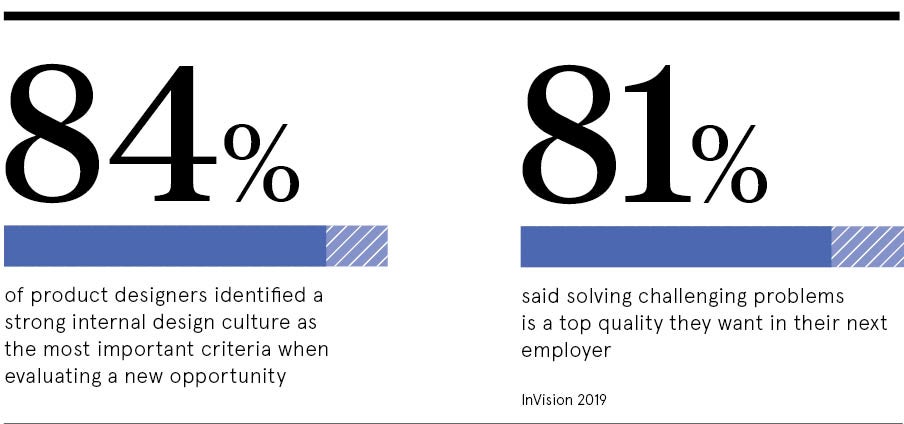Developing an innovative culture is shooting up the priority list for big business. Driven by a surge of disruptive startups innately built on new ideas and technology, well-established corporates are now seeking out a more forward-thinking approach to business.
To exploit innovation, larger companies must distance themselves from their old and familiar boardroom mentality, and instead tune into a disruptors’ mindset.
Culture change like this is not controlled by new gadgets, business models or facilities, but instead by people.
“It’s always about people, people, people, but my experience is it starts with the CEO,” says Professor Flemming Besenbacher, chairman of the Carlsberg Group, and Carlsberg Foundation, which supports innovative scientific research to aid its ambitious sustainability targets.
Professor Besenbacher believes the current Carlsberg chief executive Cees ‘t Hart’s seven-year strategy and sustainability programme is the stimulus for a new kind of energy in the business. He says these changes attracted talents the company had not seen before and drove the global brewer to embrace a much more innovative culture.
But it’s not just the responsibility of top executives to inject this kind of innovative culture into a company’s operations. “It’s virtually impossible to turn successful executives at large organisations into innovators; the skills required to run a global corporate are different to the skills to be an innovator,” says Harry Gaskell, chief innovation officer at EY UK. The key is to keep most people focused on what they do well and allow others to think about what can be improved in future, he says.
The rigid mindset of some leaders in large businesses can sometimes stop people from sharing the lessons they have learnt
“Human creativity has the power to enhance digitalisation as it will never be replaced by machines or algorithms, which is why it’s fast becoming the most in-demand skill for businesses across all industries,” explains Paul Robson, president international at Adobe. “Companies focusing on bringing in creative talent and fostering a culture of creativity will be the ones that stand out from the crowd, attract the best candidates and make an emotional connection with customers.”
A failure-friendly business model
Traditionally, corporates have adopted a zero-tolerance approach to risks or mistakes. But to develop an innovative culture, big businesses must become much more comfortable with failure.
“Success requires bold leaders who will fight off the ‘corporate antibodies’ designed to protect the organisation from anything that introduces risk and uncertainty,” says Arabel Bailey, Accenture’s innovation lead for the UK and Ireland. “Their job is to create the conditions for success, to educate senior stakeholders, to secure budget, set appropriate metrics, and to defend and champion the work of the innovation team.”
To embrace innovation, executives and their colleagues must think outside the box, open up to new ideas and develop new perspectives. This often involves delving into the unknown, where errors and failure commonly lurk.
It’s a risky business, but developing a culture where failures are acceptable, or even considered a good thing, can end up being a big advantage for larger companies looking to disrupt their markets. The real challenge is learning from those failures.

“Large businesses have a huge advantage over smaller startups as their scale enables them to learn at much faster speeds,” says Scott Campbell, leader of Deloitte Ventures, a subdivision focusing on the challenges associated with disruption. “However, the rigid mindset of some leaders in large businesses, as well as the siloed structure of teams, can sometimes stop people from sharing the lessons they have learnt.”
Instead of hiding from mistakes, leaders should encourage teams to explore the reasons why a project didn’t work out and in turn share the findings with the rest of the business.
Transforming company culture with smaller hubs
Corporates are starting to break themselves down into smaller hubs with faster, more flexible and simplified processes. This ultimately enables businesses to establish an innovative culture at a quicker pace.
Bayer has an innovation programme where small teams explore, design and validate new business models using fast experimentation in close collaboration with its customers. Krysia Sommers, head of innovation engagement at the life sciences company, believes the trick is to work closely with executives to identify business-critical challenges.
“These challenges can then be plugged into impact-driving platforms and programmes in which small teams are invited to learn and apply innovation methodologies like design thinking or lean startup,” she explains. “When potentially pioneering solutions are then pitched to those same executives, they will be more likely to take ownership and sponsor these concepts through the innovation process from the ideation stage through to prototyping, incubating and eventually scaling to market.”
The company also has innovation hubs across seven strategically located hotspots around the world, each focusing on a different medical area.
Established businesses are now working alongside startups. For Accor, owners of a range of hotel chains including ibis, Novotel and Sofitel, the solution has been to build a collective intelligence ecosystem it calls Open Innovation.
“It means our people are encouraged to explore new ideas in-depth, which in turn supports our strategy and helps us to evolve,” says Frederic Fontaine, senior vice president of Accor’s Innovation Lab. “Open Innovation also means working together with startups, which brings countless benefits for both parties.”
The corporate world is beginning to untangle itself from red tape and explore new ways of doing business. But it will only achieve an innovative culture with the help of inspirational leadership and burgeoning talent.
